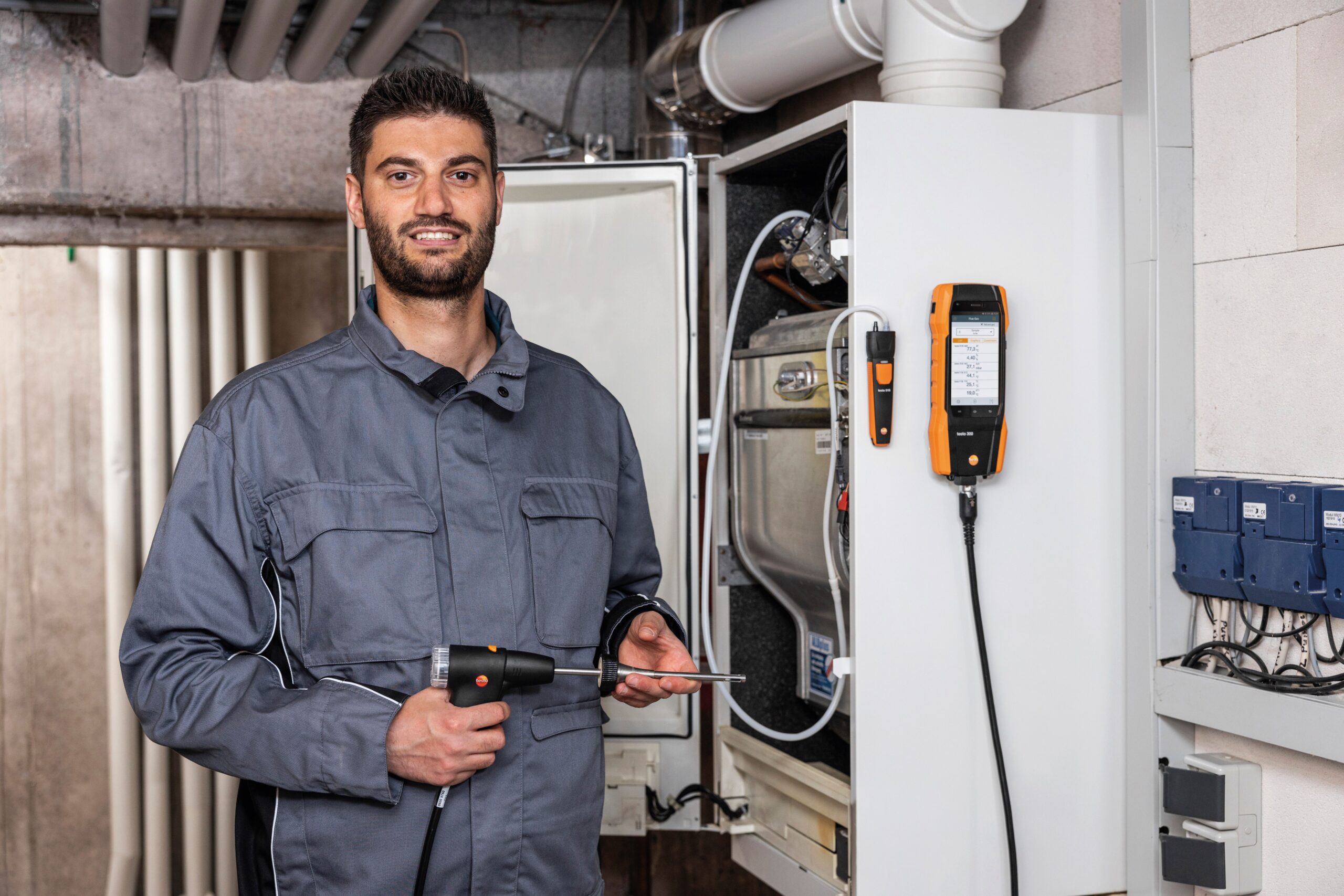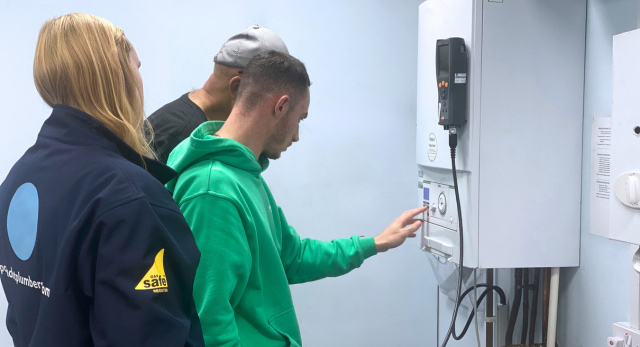Flue Gas Analysers (FGAs) are an essential bit of safety kit for all gas installers. As part of Logic4training’s Gas Safety Week campaign, we spoke to Jon Bawden, UK Product Manager for leading FGA manufacturer, Testo, to find out more about this important product:
What does an FGA do?
A flue gas analyser is an essential tool for measuring the products created by combustion from a domestic or industrial fossil fuel appliance, such as a gas boiler. Depending on the home/facility and the operations taking place, the different levels and compositions of gas can vary.
In order to find the concentrations of different gases, evaluate air to fuel ratios and regulate the burner on a boiler, a flue gas analyser must be calibrated.
An FGA can also be used to measure Carbon Monoxide (CO) and Carbon Dioxide (CO2) in the indoor air. The FGA will safely and efficiently locate any areas with a CO/CO2 leak before dangerous levels are reached.
Is an FGA a legal requirement?
Yes, as of April 1st 2014, FGAs became mandatory for heating engineers to record CO and CO/CO2 ratio when commissioning a condensing boiler.
To complete the flue gas test to the required standard, installers will need a BS 7967 specified electronic combustion gas analyser with a valid calibration certificate (annual checks are needed to guarantee accurate readings).
Installers are also required to leave a completed safety checklist with the boiler; failure to do so could render the installation non-compliant and invalidate the appliance’s warranty.
Why do FGAs need to be calibrated?
There are numerous reasons that your flue gas analyser must be calibrated! The most important is the safety of you and your customers. Your analyser regularly measures potentially harmful gases and without calibration can provide inaccurate readings and result in unsafe appliances being marked as safe.
In the UK, it is a legal requirement that a flue gas analyser has a calibration certificate. Any FGAs without this certificate cannot be used and there could be serious penalties if you get caught.
What is the calibration process?
The process for sending your device in for calibration can differ from brand to brand. Typically, you will be able to arrange calibration through the distributor you bought our analyser from. If this is not the case, the company website should have some information and instructions on how to send your device in.
Once your device has arrived with the service department, a number of tests will be carried out to check the accuracy and safety of the analyser. The tests will determine how well the FGA is performing and if any adjustments need to be undertaken. This information will then be fed back to you, with a quote for any works that need doing.
What should you look out for when choosing an FGA?
There are a number of factors to consider when choosing a flue gas analyser. These include build-quality, reliability and ease of use – if you can’t understand how to use your analyser, your jobs will become much more difficult and time consuming.
It is important to choose a flue gas analyser that fits your workload. This analyser will be accompanying you on your daily tasks as a gas installer, so make sure you take the time to consider the type of jobs you will be using it for.
Domestic – For work on domestic heating systems, it is vital that all your fuel requirements are covered and sensor specifications have been compared from model to model. For domestic use, a sensor needs to measure O2, CO and CO2.
Commercial – If your work involves light commercial boiler servicing, it could be beneficial to choose an analyser specifically made to carry out this type of work. This will mean that the measurement cells and dilution systems are designed for much larger ranges and the expected lifespan will be better.
Multi-functional – If your analyser will be used for a variety of functions, it is important to research and compare for all of these. Most analysers will measure pressure, flow/return temperatures and gas tightness in order to diagnose the heating system overall. There are also analysers on the market that allow for digital documentation and connections to different additional probes.
Sampling Probe – Though not part of the analyser itself, a sampling probe is an important factor when buying a flue gas analyser. The probe can vary in size and temperature range – typically, a domestic engineer will require a 180mm x 6mm probe that measures up to 500°C.
Testo manufacture a range of flue gas analysers perfect for domestic and commercial applications. For more information, visit https://www.testo.com/en-UK/products/flue-gas-analyser.









